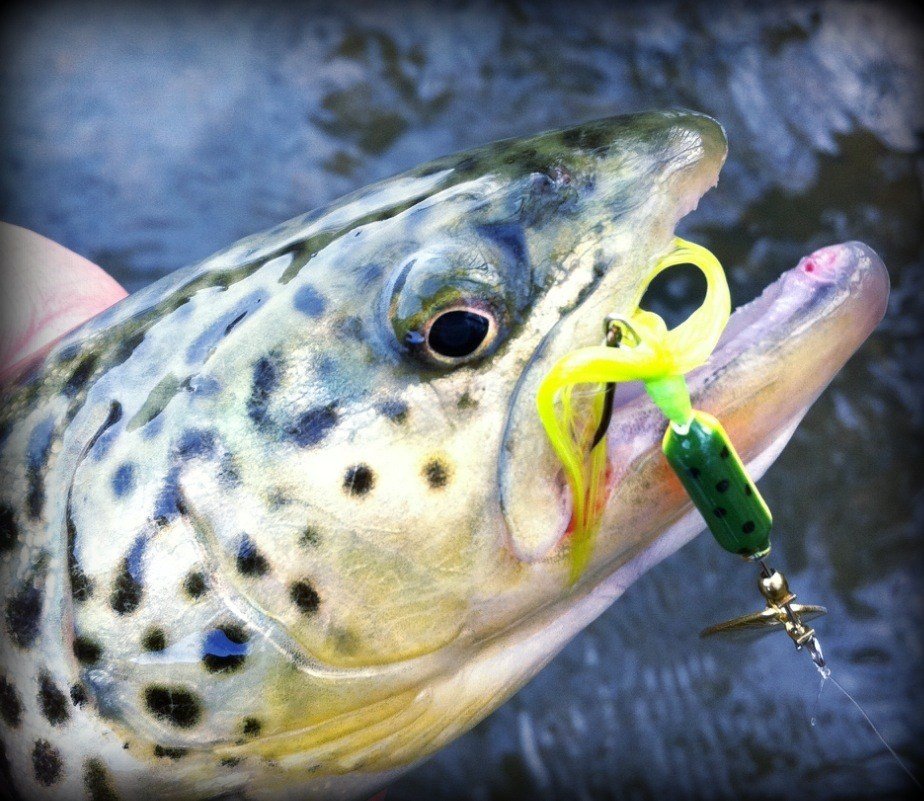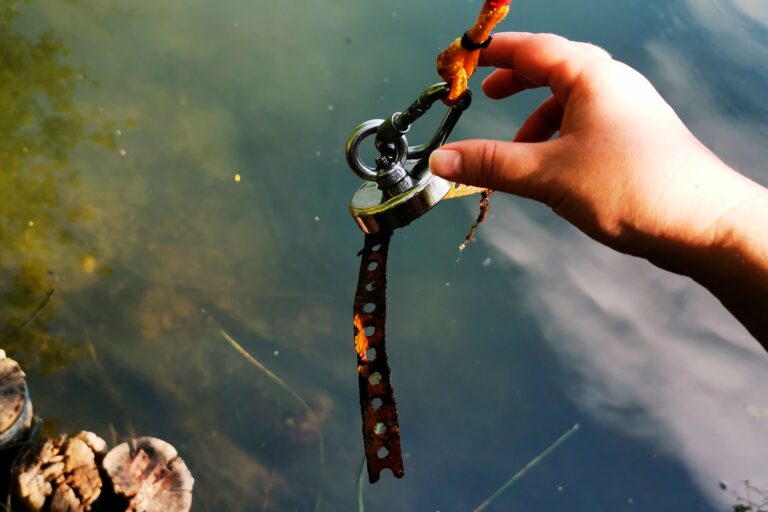Swivels for fishing should be used when you need to prevent fishing line tangling or twisting. Swivels are useful for connecting the main line with leader lines or lures, enabling smooth rotation and reducing line wear.
Swivels are especially recommended for fishing techniques that involve fast retrieval or spinning lures. They provide flexibility and prevent line breakage caused by rotational forces. When used properly, swivels can enhance the effectiveness of your fishing setup and improve your overall fishing experience.
So, whether you’re a professional angler or a fishing enthusiast, incorporating swivels into your tackle can greatly benefit your fishing success.

Credit: addicted.fishing
Why You Should Consider Using Swivels
If you’re an avid angler, you may have heard about using swivels in your fishing tackle. Swivels are a small but powerful tool that can greatly improve your fishing experience. Here are a few key reasons why you should consider incorporating swivels into your fishing arsenal:
Minimizing Line Twist
Using swivels can help minimize line twist, a common challenge faced by anglers. Line twist occurs when the fishing line becomes twisted during casting or retrieving, causing knots and tangles. By attaching a swivel to your line, it allows the lure or bait to rotate freely without twisting the line itself.
This not only prevents tangles but also ensures a smooth and natural presentation in the water.
- Swivels eliminate line twist by allowing the bait or lure to spin freely.
- Avoids knots and tangles that can hinder your fishing experience.
- Promotes a more natural presentation of the bait or lure in the water.
Increasing Casting Distance
Another advantage of using swivels is that they can significantly increase your casting distance. When the line is connected directly to the lure or bait, it can sometimes create drag as it spins through the air. This drag limits the distance you can cast.
By using a swivel, it allows the bait or lure to spin independently, reducing drag and enabling you to cast farther.
- Swivels minimize drag, which allows for improved casting distance.
- Enables you to reach areas that were previously out of range.
- Increases the chances of reaching fish in deeper or harder-to-reach spots.
Protecting Against Line Breakage
Line breakage can be a frustrating setback for any angler. Swivels can act as a buffer between your main line and leader, protecting against the strain and stress that can lead to breakage. Swivels are designed to handle high levels of tension and provide added strength to your line setup.
This is especially useful when targeting larger, more powerful fish species.
- Swivels add strength to your line, reducing the risk of breakage.
- Acts as a buffer between the main line and leader.
- Ideal for targeting big game fish or species known for their powerful runs.
Using swivels in your fishing setup can bring several benefits, including minimizing line twist, increasing casting distance, and protecting against line breakage. Consider adding a swivel to your tackle box and take advantage of these advantages on your next fishing adventure.
Factors To Consider When Choosing Swivels
Swivels are an essential component of any fishing tackle setup, playing a crucial role in preventing line twists and ensuring a smooth fishing experience. When selecting the right swivels for your fishing needs, there are several factors to consider. Here, we’ll discuss the three key factors that will help you make an informed decision: swivel size and strength, material and construction, and bearing type.
Swivel Size And Strength
Choosing the correct swivel size and strength is crucial to ensure it can withstand the weight and force exerted while fishing. Here are some important points to consider:
- Size matters: Swivels are available in various sizes, typically ranging from #12 to #1, with #12 being the smallest and #1 the largest. Selecting the right size depends on the weight of the fish you’re targeting and the fishing line’s pound test strength.
- Strength and durability: Different swivels come with varying strength ratings, usually mentioned in pounds. Ensure you choose a swivel that can handle the weight of your target fish species. It’s always better to opt for a swivel with a higher pound test strength to provide a safety margin.
- Compactness: Swivels should be compact and lightweight to minimize any interference with bait presentation and reduce the chance of spooking fish.
Material And Construction
The material and construction of swivels significantly impact their performance and lifespan. Consider the following aspects:
- Corrosion resistance: Choose swivels made from high-quality materials such as stainless steel or brass, known for their excellent corrosion resistance. This ensures longevity and reliable performance, even in saltwater fishing conditions.
- Smooth rotation: Look for swivels with smooth ball bearing rotation, as this allows for predictable and effortless movement. Sealed ball bearings or bushings in swivels provide smooth operation and reduce any potential friction.
- Durability: Opt for swivels with sturdy construction that can handle the rigors of angling. Robust welds, solid rings, and durable components are indicators of a reliable swivel that will hold up under pressure.
Bearing Type
The type of bearing in a swivel affects its rotation and overall performance. Consider these factors:
- Ball bearings: Swivels with ball bearings offer superior rotation, ensuring better line movement and reducing the chance of line twists. These types of swivels are ideal for high-stress situations and heavy-duty fishing applications.
- Rolling barrel: Swivels with rolling barrel bearings are known for their silky-smooth rotation. They are a great choice for a wide range of fishing techniques and provide excellent tangle-free performance.
- Bushing/hinge: Swivels with bushings or hinges are simpler in design but can still offer reliable performance. These swivels are commonly used for light to medium fishing applications.
Selecting the right swivel size and strength, considering the material and construction, and bearing type are key factors to ensure an optimal fishing experience. Keep in mind the specific fishing conditions, target species, and desired performance to make an informed decision.
Elevate your fishing game by choosing the perfect swivel for your needs and enjoy a hassle-free angling adventure.
Different Fishing Situations Where Swivels Can Be Beneficial
Swivels are an essential tool in any angler’s tackle box. These small yet mighty connectors serve a variety of purposes and can make a significant difference in different fishing situations. Whether you’re trolling for big game fish, bottom fishing in rough waters, or using live bait or lures, swivels can greatly enhance your fishing experience.
Let’s take a closer look at how swivels can be advantageous in each of these scenarios:
Trolling For Big Game Fish
When it comes to trolling for big game fish, having a well-designed swivel can be a game-changer. Here’s why:
- Reduced line twist: The fast-paced movement of trolling can cause your fishing line to twist and tangle, leading to frustration and lost fish. Swivels play a crucial role in minimizing line twist, ensuring that your line stays untangled and your bait moves naturally through the water.
- Enhanced bait action: Trolling often involves using artificial baits or lures that rely on proper movement to attract fish. Swivels enable these baits to swim freely and impart lifelike action, increasing their effectiveness in enticing big game fish.
- Increased durability: Big game fish can put a tremendous amount of strain on your fishing gear. By incorporating swivels into your trolling setup, you can distribute the pressure evenly across your line and reduce the chances of line breakage, providing you with added durability and peace of mind.
Bottom Fishing In Rough Waters
Bottom fishing in rough waters can be challenging, but using swivels can make a world of difference. Here’s how swivels can be beneficial:
- Reduced line tangling: When fishing in turbulent waters, the movement of the waves can cause your fishing line to become tangled and frustrating to deal with. Swivels help mitigate this issue by allowing your line to rotate effortlessly, preventing knots and tangles that could potentially result in lost fish.
- Improved bait positioning: To entice bottom-dwelling fish, your bait needs to stay close to the seabed. However, strong currents and choppy waters can make this difficult. Swivels can act as an anchor, keeping your bait in place and ensuring it remains in the strike zone for a longer period, increasing your chances of a successful catch.
- Increased sensitivity: Bottom fishing often requires anglers to have a keen sense of what’s happening beneath the water’s surface. Swivels help transmit even the subtlest of movements to your fishing rod, enhancing your ability to detect bites and react promptly, resulting in more successful hook-ups.
Using Live Bait Or Lures
Whether you prefer using live bait or lures, incorporating swivels into your setup can bring various benefits. Here’s why swivels are advantageous in these situations:
- Natural bait presentation: Live bait and lures are meant to mimic the movements of prey, attracting fish with their lifelike action. Swivels allow these baits to move freely, providing a more natural presentation and increasing the likelihood of enticing fish to bite.
- Reduced line twist: Live bait and lures often require casting and retrieving, which can introduce line twist. Swivels effectively minimize line twist, ensuring a smooth retrieval process and reducing the chances of your line tangling or getting damaged.
- Versatility: Swivels come in various sizes and styles to accommodate different fishing techniques and bait types. They can be easily attached to your line and provide the flexibility to quickly switch between different baits or lures without the need for complicated retying.
Swivels are immensely useful tools that can greatly enhance your fishing success in various fishing situations. Whether you’re trolling for big game fish, bottom fishing in rough waters, or using live bait or lures, incorporating swivels into your tackle setup will undoubtedly improve your overall angling experience.
So next time you head out to the water, don’t forget to include trusty swivels in your gear arsenal. Happy fishing!
Conclusion
As we wrap up this blog post on when to use swivels for fishing, it’s clear that swivels can be a valuable tool in certain fishing scenarios. Whether you’re using them to prevent line twisting or to achieve better lure action, swivels offer practical solutions for anglers.
However, it’s important to understand the limitations of swivels and not rely on them as a cure-all for all fishing challenges. It’s crucial to match the right type and size of swivel to your fishing tackle and target species. Remember to consider factors such as water conditions, fishing techniques, and personal preferences when deciding whether to use swivels.
Overall, swivels can enhance your fishing experience and increase your chances of success, but they should be used strategically and in conjunction with other tackle components. So, next time you hit the water, consider adding swivels to your arsenal and see how they can improve your fishing game.
Happy fishing!




